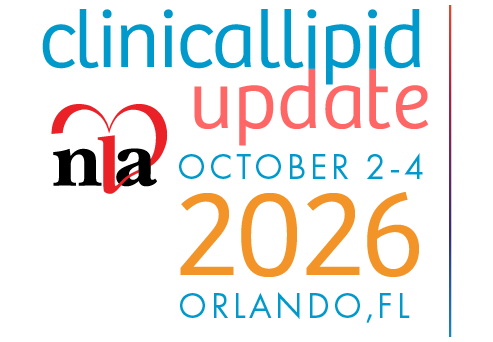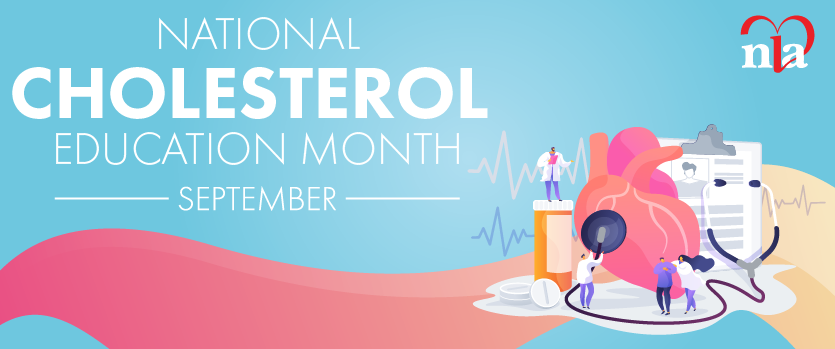Introduction
Symptomatic coronary atherosclerosis is rare in women under age 40, even when conventional risk factors are present. This “athero-protection” has been attributed to the female “hormonal advantage” during premenopausal years. However, it has been speculated that other, non-hormonal X-linked factors and/or absence of Y-linked factors also contribute to gender differences in atherosclerotic risk. Whatever its causes, the case presented below confirms that athero-protection can be lost very early in young women with Turner Syndrome (TS), a complex and poorly understood disorder marked by loss of all or part of one female X chromosome. This may be especially true when hypo-estrogenemia, a cardinal feature of the syndrome, is untreated for long periods and co-exists with dyslipidemia, vascular inflammation, a strong family history of coronary disease and, very likely, other unknown traits that influence vascular risk.
.jpg)
Case Presentation
M.T. was a 29-year-old woman referred to our practice for exertional dyspnea, upper back pain, and an echocardiogram suspicious for occult ischemic cardiomyopathy. Past medical history was significant for TS diagnosed after pubertal delay. Although the patient was treated with standard hormone therapy, including growth hormone from ages 13 to 15 and exogenous estrogen to induce feminization beginning at age 14, she self-discontinued the latter at age 19. At the time of her referral, she had been off female hormones for about a decade. Past medical history also was notable for osteoporosis, combined hyperlipidemia, obesity, and newly diagnosed hypertension recently treated with atenolol 25mg daily. There was no personal history of diabetes or smoking. Family history was notable for premature coronary artery events in both parents and paternal grandparents during middle age.
On exam, her blood pressure was 140/90 mmHg, heart rate 68 bpm, respirations normal, weight 181 pounds, height 60 inches, and BMI 35. Physical examination showed findings characteristic of TS, including mild neck webbing, a broad chest wall, and abdominal obesity. A cardiac exam showed a split S2 without murmurs, and trace pedal edema. The electrocardiogram showed a right bundle branch block and Q waves inferolaterally. The echocardiogram showed a reduced left ventricular ejection fraction (LVEF) in the 35 to 40 percent range and hypokinesis of portions of the anterior and inferior walls. Laboratory data earlier that month showed a total cholesterol of 234 mg/dl, high density lipoprotein-cholesterol (HDL-C), 51 mg/ dl; non-HDL-C, 183 mg/dl; low density lipoprotein cholesterol (LDL-C), 150mg/ dl; triglycerides (TG), 163 mg/dl; high- sensitivity C-reactive protein (CRP), 3.8 mg/L; fasting blood glucose, 81mg/dl; and thyroid-stimulating hormone, 4.1 uIU/ml.
A myocardial perfusion scan showed mixed scar and ischemia in the anterior and anterolateral territories and a reduced LVEF in the 40-percent range. Coronary angiography (Figure 1) showed a 95 percent stenosis in the mid-left anterior descending coronary artery .jpg) (LAD), for which a drug-eluting stent was placed. Upon hospital discharge, atenolol was continued and the patient was prescribed dual anti-platelet therapy with aspirin and clopidogrel, and atorvastatin 40 milligrams daily. At follow-up, trans-dermal estrogen and a progestin had been restarted by the patient’s gynecologist. Repeat lipid testing on atorvastatin and hormone therapy showed a total cholesterol of 127 mg/dl, HDL of 56 mg/dl, non-HDL-C of 71 mg/dl, TG of 51 mg/dl, and LDL-C of 62 mg/dl. An LDL particle number was 837 nmol/L, small LDL-P was < 90 nmol/L, and lipoprotein(a) was 12 mg/dl.
(LAD), for which a drug-eluting stent was placed. Upon hospital discharge, atenolol was continued and the patient was prescribed dual anti-platelet therapy with aspirin and clopidogrel, and atorvastatin 40 milligrams daily. At follow-up, trans-dermal estrogen and a progestin had been restarted by the patient’s gynecologist. Repeat lipid testing on atorvastatin and hormone therapy showed a total cholesterol of 127 mg/dl, HDL of 56 mg/dl, non-HDL-C of 71 mg/dl, TG of 51 mg/dl, and LDL-C of 62 mg/dl. An LDL particle number was 837 nmol/L, small LDL-P was < 90 nmol/L, and lipoprotein(a) was 12 mg/dl.
Discussion: Basics of Turner Syndrome
TS occurs in an estimated one in 2,000 to 2,500 live female births and is marked by the loss of all or part of one female sex chromosome, leading to a 45,XO karyotype. Genetic “mosaicism” — the presence of a normal 46,XX karyotype in some cell lines and 45,XO in others (Figure 2) — is believed to exist in a large percentage of affected individuals, leading to wide variations in phenotype. Fragments of the Y chromosome may exist in up to 5 percent of TS patients, causing virilization and additional phenotypic variability. Short stature, neck webbing, pubertal delay, and progressive ovarian failure and infertility are the classic physical findings, the latter the result of ovarian follicle loss that begins in utero and continues after birth. However, the wide variation in phenotype leads to diagnostic delays in a large .jpg) percentage of girls and women, and some remain completely undiagnosed. The latter fact is sobering, since women with TS have a markedly increased risk of cardiovascular morbidity and mortality, much of which might be prevented by early screening and intervention.
percentage of girls and women, and some remain completely undiagnosed. The latter fact is sobering, since women with TS have a markedly increased risk of cardiovascular morbidity and mortality, much of which might be prevented by early screening and intervention.
Vascular Pathology in Turner Syndrome
Aortic and arterial pathology, including aneurysms and dissections, and other left-sided cardiovascular anomalies exist in up to 50 percent of TS patients and contribute significantly to the three-fold increase in mortality and reduced life-expectancy. Early coronary atherosclerosis and acute myocardial infarctions are additional features of TS that add to the higher death rate, with a reported standardized mortality ratio of approximately 3.5, though some have debated the association. Manifest coronary disease may occur as early as the fourth decade, as seen in our patient, who presented at the cusp of this time period. Studies show increases in carotid intima-media thickness (CIMT) beginning as early as the second decade in TS patients, suggesting that sub-clinical atherosclerosis probably begins in childhood. Not surprisingly, TS is associated with an increased burden of most major .jpg) atherosclerotic risk factors, driven at least in part by deficiencies of growth hormone and estrogen, the latter from lack of ovarian function. The fact that mean levels of atherogenic lipoproteins — including LDL-C, TG, LDL particle number, and small LDL particle number — are significantly increased in TS patients compared to genetically normal 46,XX females with premature ovarian failure, (Table 1) suggests that factors other than estrogen deficiency probably play a role in creating the dyslipidemia observed in TS. Significant increases in hypertension, visceral adiposity, and impaired glucose tolerance — the latter independent of body fat mass — also are observed in TS compared to controls. Increased levels of several pro-thrombotic factors are additional features of the phenotype, which may contribute to observed increases in acute atherothrombotic events. Our patient had presumed long-standing hypo-estrogenemia before resuming estrogen-progestin therapy, along with dyslipidemia, hypertension, a family history of early coronary disease, and features of the metabolic syndrome, the combination of which likely fueled her early coronary disease.
atherosclerotic risk factors, driven at least in part by deficiencies of growth hormone and estrogen, the latter from lack of ovarian function. The fact that mean levels of atherogenic lipoproteins — including LDL-C, TG, LDL particle number, and small LDL particle number — are significantly increased in TS patients compared to genetically normal 46,XX females with premature ovarian failure, (Table 1) suggests that factors other than estrogen deficiency probably play a role in creating the dyslipidemia observed in TS. Significant increases in hypertension, visceral adiposity, and impaired glucose tolerance — the latter independent of body fat mass — also are observed in TS compared to controls. Increased levels of several pro-thrombotic factors are additional features of the phenotype, which may contribute to observed increases in acute atherothrombotic events. Our patient had presumed long-standing hypo-estrogenemia before resuming estrogen-progestin therapy, along with dyslipidemia, hypertension, a family history of early coronary disease, and features of the metabolic syndrome, the combination of which likely fueled her early coronary disease.
Genetic Mechanisms in Turner Syndrome
The genotypes responsible for early vascular disease, and all other clinical traits in TS patients, remain poorly defined. The genetics of the disorder are believed to be more complex than previously recognized and at least two hypothetical models have been proposed (Figure 3). Whichever is accurate, it is clear that TS probably involves altered transcription of numerous X-linked and autosomal regulatory and structural genes. This, in turn, leads to fundamental alterations in tissue genesis and maintenance, and to dysfunction of vascular, endocrinologic, hematologic, immunologic, and other organ systems, beginning in utero. (Figure 4). Indeed, at least xists in a large uting to phenotypic one histological fetal autopsy study has shown onset in 45,XO fetuses of an aortic and arterial structural vasculopathy, marked by disruption of smooth muscle cell (SMC) derived collagen, elastin, and other extracellular matrix proteins. These structural abnormalities of the tunica media probably account for the high incidence of aortic dilatation and dissection in TS. Theoretically, these same abnormalities could later inhibit SMC-mediated stabilization of atheroma created prematurely by the hormonal milieu, leading to early clinical events. Abnormalities of T-cell function, increases in inflammatory cytokines, and defective coagulation and fibrinolysis, all observed in TS, may also contribute to early atherosclerotic events.
Screening and Treatment of Turner Syndrome
The Turner Syndrome Consensus Study Group updated its guideline for the care of girls and women with TS in 2007. Recommendations include imaging tests, including echocardiography and magnetic resonance imaging (MRI), to screen for structural cardiac and aortic abnormalities, along with routine testing to evaluate for dyslipidemia, hypertension, and diabetes beginning on transition of young TS patients to adult care and regularly thereafter. Recommendations regarding the timing of estrogen treatment are evolving. Previously, experts recommended that exogenous estrogen, administered to induce and maintain feminization, be withheld until after maximum skeletal growth was achieved. However, it is now recognized that any negative effects of estrogen on growth plate closure can be overcome by early growth hormone administration. Therefore earlier estrogen treatment is now recommended in girls with TS. Experts caution that clinicians .jpg) should not extrapolate negative outcomes from estrogen replacement in post- menopausal women to TS patients suffering from estrogen deficiency early in life, since any pro-thrombotic effects of estrogen are likely outweighed by favorable effects on endothelial, smooth muscle, inflammatory, and cardiac muscle cells, and on hepatic lipoprotein and glucose metabolism. Nonetheless, no hard endpoint studies of the effects of exogenous estrogen in TS patients exist. Moreover, because the favorable vascular effects of estrogen may be less after prolonged estrogen deficiency, it is difficult to perform a risk/benefit analysis for estrogen therapy in our young patient who probably had longstanding hypo-estrogenemia by age 29 and now has established coronary disease.
should not extrapolate negative outcomes from estrogen replacement in post- menopausal women to TS patients suffering from estrogen deficiency early in life, since any pro-thrombotic effects of estrogen are likely outweighed by favorable effects on endothelial, smooth muscle, inflammatory, and cardiac muscle cells, and on hepatic lipoprotein and glucose metabolism. Nonetheless, no hard endpoint studies of the effects of exogenous estrogen in TS patients exist. Moreover, because the favorable vascular effects of estrogen may be less after prolonged estrogen deficiency, it is difficult to perform a risk/benefit analysis for estrogen therapy in our young patient who probably had longstanding hypo-estrogenemia by age 29 and now has established coronary disease.
There are no specific recommendations regarding the thresholds for, or timing and targets of, diet or drug treatment of dyslipidemia in TS patients. Since only a small percentage of women with TS are able to conceive, there may be a role for earlier pharmacologic treatment of lipoprotein disorders to reduce future atherosclerotic vascular risk, because concerns over child bearing and pregnancy are removed (although more women with TS are benefiting from advanced techniques to improve fertility and conception rates). Since multidisciplinary care of TS patients by primary care physicians, endocrinologists, cardiologists, and psychologists has now been recommended by some, strong consideration should be given to including lipid specialists in the care model. Finally, as some have proposed, it is time to recognize TS as a distinct gender-specific vascular risk factor, the presence of which calls for serial imaging to evaluate for aortic pathology, and aggressive diet, lifestyle, and pharmacologic interventions to reduce the risk of early morbidity and mortality from atherosclerotic vascular events.
Disclosure statement: Dr. Aspry received consulting fees from the National Lipid Association.
References are listed on page 40 of the PDF.






.jpg)
.png)











